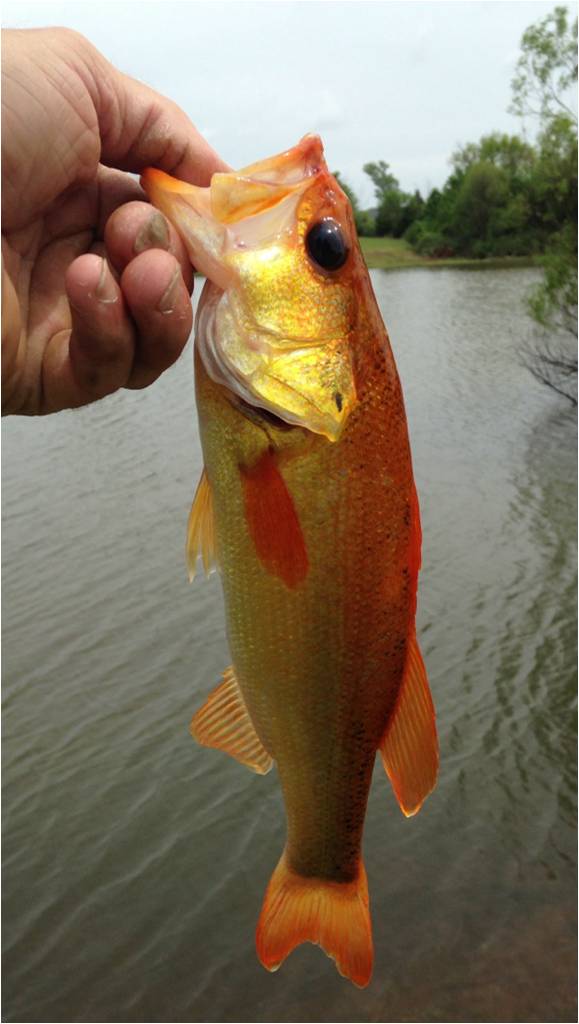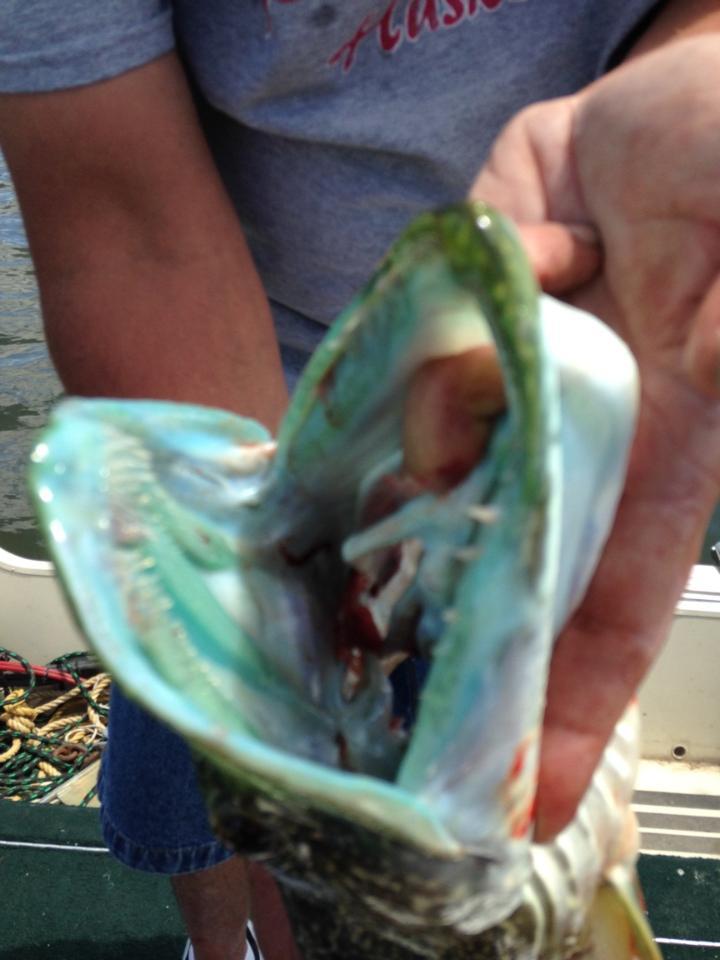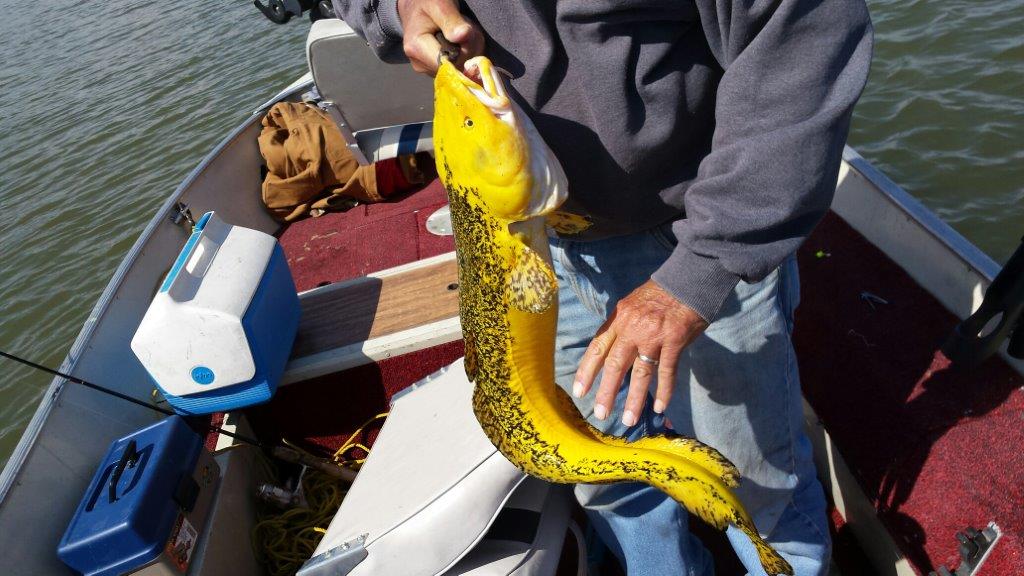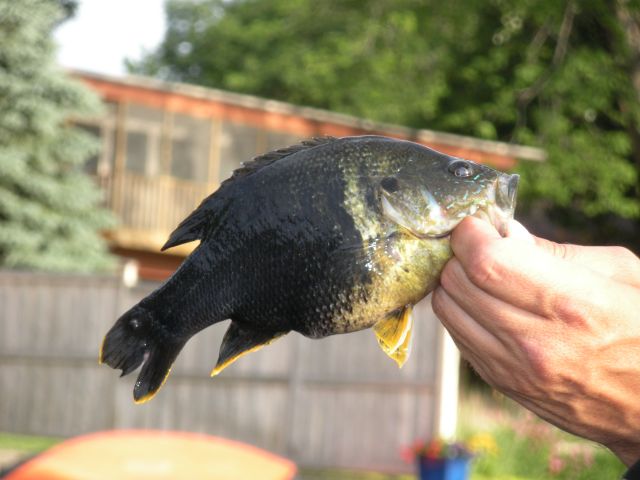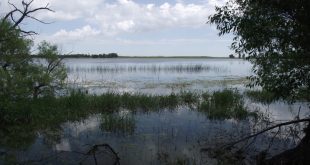If you spend time in the outdoors, on the water, in the field, or in the “woods”, you have to marvel at the variety you can experience in nature. Sure, there are patterns, tendencies, habits, cycles, but if you spend anytime at all “out there” you will encounter something from time to time that you have never seen or experienced before. And that is one thing that keeps us going back, again and again.
With that in mind, let me share with you some photos of some oddities that I have collected recently. All of these are oddly-colored fish, and in all likelihood absolutely nothing was wrong with these fish–no pollutants, no exotic diseases, just genetic oddities.
The first is a golden largemouth bass caught in Nebraska.
I have seen documentation of “golden” bass from other waters around the country. It is not common, but it is not unheard of either.
This second fish was also caught in Nebraska, a northern pike from Calamus Reservoir.
I know, I know, the photo is blurry, but notice the odd bluish-green shading inside of the mouth. Other photos showed the same odd bluish-green coloration on the edges of fins, but the rest of the fish was colored as you would expect any northern pike to be colored.
This last one is not from Nebraska at all, but it is the most fantastic. I have to share it.
That is a burbot, a fish native to the Missouri River. That particular chartreuse burbot was caught on the Missouri up in NoDakota early this spring. That is such a fantastically-colored fish, that those pictures have been making the rounds among pointy-headed fish biologists.
Oddities in coloration or pigmentation of fish as I said earlier are generally some sort of genetic oddity. They are not common in the wild, but as you can see, they happen. As I understand it, those color oddities result when genetically certain pigments are NOT expressed and that allows other colors to “shine through”.
You all know that the absence of any pigmentation is called “albinism”. True albino organisms have no pigmentation, and are white with red eyes (the red is the blood in their eyes). I have collected an albino channel catfish while sampling fish on a Nebraska interstate lake. Believing I had something special I put that fish in a holding tank and made some phone calls to aquariums to see if anyone wanted an albino channel catfish? I was surprised to find that no one wanted an albino channel catfish because everyone had all they wanted. Channel catfish are a fish that have been “cultured”, “domesticated”, raised in hatcheries long enough that the occurrence of albinos is not common, but more common than would occur in the “wild”. And that is why every aquarium I called already had an albino channel catfish. Of course you know that albinos rarely survive for long in the wild because unless they live on a snow drift, they are very visible to predators.
The expression of odd gold or yellow colorations is called “xanthism”.
Critters that are darkly-colored, usually black, have “melanism”. I do not know that I have seen any fish that are entirely melanistic or black. But, I have seen examples of channel catfish, largemouth bass and green sunfish that have odd black blotches or spots. The most “dramatic” I have seen was a green sunfish caught from a small, urban, private pond in Nebraska.
Dark spots or colorations on fish can be evidence of injuries, perhaps diseases or parasites that have been endured in the past. However, in most cases those odd colors are nothing more than genetic oddities, the odd variety of “nature”.
Now I have no fancy biologist term to describe the northern pike with the blue-green shading inside its mouth and on its fins. Maybe I will just invent one? That was a “cyanoistic” pike. Ha.
Anyway, again I will return to my theme of not knowing what you might catch when you put a line in the water. You just never know, and that is the beauty of it! It could be “One Fish, Two Fish, Red Fish, Green Fish” gold fish, black fish, chartreuse fish, bluegreen fish. . . .
 Nebraskaland Magazine
Nebraskaland Magazine
